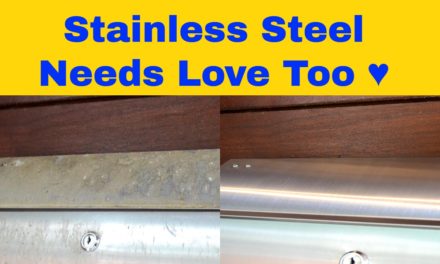You Need a Nail Gun!
If you’re new to pneumatic nail guns, you might be overwhelmed by the various types and sizes available. Here at Toolbox DIY, we want you to have as much knowledge as possible to be a successful DIY’er so we’re bringing you this introduction to pneumatic nail guns a.k.a. nailers or air nailers. Armed with this info you’ll have first nail gun in no time.
Common Nail Gun Types
-
Pin nailer
- Pin nailers typically use 21 or 23 gauge pins. These are the smallest fasteners for nailers. 23 gauge pins are for the most delicate trim work – they are headless pins that leave an extremely small hole that can easily be covered up. The downside to their small size is that they don’t have as much strength as larger gauge brads or finish nails. The length of pins can range from 3/8″ to over 2″. The pin nailers that can support the 2″+ pins are typically [a lot] more expensive. When choosing a pin nailer try to find a gun that supports the largest range of pin lengths that fits within your budget.
-
Staplers
- The stapler in this video uses T50 staples like you would find in a manual hand stapler. If you have a lot of stapling to do, we highly recommend one of these. Your hands will thank you. You can also find crown molding staplers which use very long staples for use on crown molding that will ultimately be painted. Additionally, you can find fine wire (23ga) staplers for more delicate work. There are numerous options out there as far as staplers go, but the T50 stapler is great for general purpose stapling.
-
Brad nailers (18ga)
- Brads are a type of finish nails. They are typically used for trim, moldings, and casings. These can also be used for paneling, furniture repair, and fastening any delicate pieces that might split easily. This is somewhat of the catch-all for finish nailers but doesn’t come with a lot of strength. If you only plan on buying one finish nailer, this is a good choice.
-
Finish nailers (15 and 16 ga)
- 15 & 16 gauge finisher nailers are very similar – the only real difference between the two is that 15 ga nails have slightly more holding power than 16ga and 16ga nailers are a little lighter. These finish nailers can be used for cabinet and furniture making, picture frame assemble, and molding installation. If you’re looking for one of these finish nailers, you’ll notice that you can get these as a straight or angled nailer. Angled nailers can get into tight spaces more easily, but may cost you a bit more money.
-
Framing nailers
- These are the heavy duty guns. The kind that eliminate the need or swinging a framing hammer. As far as home repair goes, you probably won’t have much need for a framing nailer. However, you might find yourself with a large project or renovation that requires 6 to 12 penny nails and one of these can save you some time. The nailer in this video can shoot 6 to 12 penny nails ranging in lengths from 2 to 3.5 in in length. When shopping for a framing nailer you’ll find reference to full head or clipped head nail support. This is a full head version which shoots the type of nails you drive by hand. Clipped head nails have a small notch taken out of the head to allow nails to be grouped closer together so you get more nails per clip. For DIY’ers, we recommend going with the full head nailer. If you’re a pro or looking to do a massive framing job, then you might consider the clipped head.
-
Specialty guns you might find include:
- Crown staplers
- Upholstery staplers for…yep, attaching upholstery
- Hardwood flooring guns – these that make easy work out of driving special staples for installing tongue and grove hardwood flooring
- Roofing nail guns – these have a circular canister for holding a coil of nails.
- If you have a large job that could benefit from these specialty guns then we recommend looking into these further. But for the most part, you probably won’t need any these.
How much money should you spend on a nail gun?
If you don’t use these guns very often it might not make sense to invest in name brands. If you do invest in name brands, look for deals on factory refurbished guns. However, if a particular gun is something you’ll use a lot then we would recommend doing some research and finding a reputable brand and spending the extra cash.
Choosing an air compressor
Lastly, a good air compressor is necessary for proper operation of any nail gun. If you are choosing a compressor, start by identifying the various nail guns you intend to buy and find out what the minimum PSI and CFM requirements are. PSI is the amount of pressure (pounds per square inch) provided – CFM is the amount of air volume (cubic foot per minute) provided. A good compressor for DIY use is a 6 gallon pancake compressor. These typically provide up to 150 PSI which can be adjusted for smaller nailers and they provide between 2.6 and 2.8 CFM at 90PSI. Be sure to check the CFM output at various PSI levels to ensure it will provide enough air for the nailers you have or intend to purchase. I’m a fan of this compressor – it’s light, cheap, and gets the job done.
As an Amazon Associate I earn from qualifying purchases.








